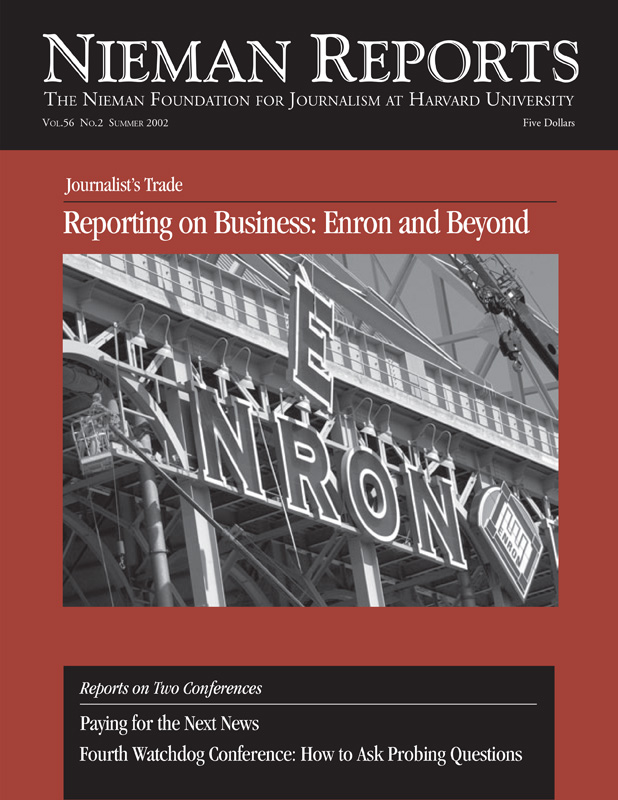
At about 10 o’clock in the evening of January 16, 2001, the majority of senators, acting as judges in the impeachment trial of then Philippine President Joseph Estrada, decided not to accept new evidence that would incriminate the president on charges of receiving millions in payoffs from businessmen. The trial, which had been aired live on television and radio for three weeks, reached an impasse. The Senate vote was indication that the judges were inclined toward acquitting Estrada and confirmed the worst suspicions of many Filipinos that the trial was merely a charade.
Within an hour after the court had adjourned, hundreds of citizens were in the streets, honking horns, banging on pans, and demanding Estrada’s resignation. By midnight, thousands had gathered on a highway called Edsa, the site of the 1986 “people power” revolt against the dictator Ferdinand Marcos. Many who came had watched the trial on television and received text messages on their mobile phones. Because of short message service (SMS) that phone companies provide to some 4.5 million Filipino mobile phone users, the calls to protest the Senate vote by staging a “noise barrage” and, later, to gather on Edsa until Estrada had been ousted, were disseminated with lightning speed. During the four days of the uprising that ended with Estrada’s fall, SMS was used to coordinate the protests, keep protesters abreast of events as they unfolded, and to mobilize citizens to march, to bring food, and to keep vigil.
Although the traditional media—newspapers, radio and television—were covering events freely and aggressively, they could not keep pace with the speed with which information traveled through SMS. Nor were they as interactive as SMS, lacking the ability to link individual users to each other. Throughout the crisis, activists used SMS because it was secure: Text messages sent via mobile phones are difficult to trace.
Apart from the SMS, e-mail and the Web were also the weapons of protest. As many as 200 anti-Estrada Web sites and about 100 e-mail groups were set up during that period. Organized groups used e-mail to discuss position papers, reach a consensus on issues, and mobilize numbers for rallies. The Web played host to satire and polemical tracts and even to virtual rallies.
Indeed, it was a multimedia revolt. It is estimated that as many as 70 million messages were sent during the week of the uprising. Those who stayed home read newspapers and watched television or listened to the radio. Web sites were reporting on events in real time, so even those who were abroad could keep track of events as they unfolded.
The mainstream media also enjoyed unprecedented sales. But the key role these new technologies played in the revolt was due in part to the restraint the established media initially showed in their reporting on Estrada, who had intimidated journalists and vented his ire on media outlets that were critical of him by closing down newspapers or threatening libel suits against them. Only when the anger on the streets was palpable did many news organizations become bold enough to print or air critical reports.
The revolt showed the roles that different kinds of media play in providing information, encouraging participation in protests by reporting on them, and keeping protesters in touch with each other. These events renewed faith in the importance of media freedom in promoting Philippine democracy, a faith that had been eroded by an irresponsible press that often resorted to shoddy and sensational reporting to meet the demands of a crowded and competitive market. It also demonstrated the potential of new technologies to enrich democracy by providing alternative channels of communication and raising awareness of issues not through traditional journalism but through text and visuals sent by individuals without the mediation of gatekeepers. Finally, the uprising showed that the market—traditionally seen as an obstacle to independent and hard-hitting political reporting—can actually compel mainstream media to be more professional and to perform its watchdog role without fear.
Early on in his two-and-half-year presidency, Estrada recognized that the use of state power to control the media is not publicly acceptable. So he resorted instead to other forms of press control. One that he used is “envelopmental journalism,” the bribing of journalists to ensure favorable coverage. For years, this has systematically been done by companies and by government agencies to skew reporting in their favor. It is well-known that some journalists are on the monthly payroll of politicians or companies. Special payoffs are made during periods like elections or the launching of new products. Often the bribes are done so discreetly that they pass through automated teller machines so they don’t leave a paper trail.
But Estrada brought this practice to new heights. As revelations in his impeachment trial showed, the president had a monthly budget of P2 million (about $40,000) that he used to pay off editors, news anchors, and reporters to ensure that they did not print or air unfavorable reports. This money, the evidence showed, came from payoffs Estrada received from illegal gambling operators. The funds were turned over to an official whose title was presidential liaison for legislative affairs. The official ran a semi-clandestine office that distributed cash to journalists while the real press office went about the more routine business of issuing media releases and scheduling interviews and press conferences.
Estrada also muzzled the press by putting pressure on media proprietors. That most of the Philippine media are owned by big companies makes them especially vulnerable to being squeezed by the government or used to promote the business agenda of their owners. Angry at a barrage of negative reporting, Estrada made his displeasure known to media proprietors and did not balk at putting the squeeze on them to tone down critical coverage. In July 1999, he forced the closure of the critical Manila Times by threatening tax audits on the other businesses of its owners. The newspaper, owned by a family that ran a business empire including manufacturing, real estate, and agriculture, was sold to an Estrada crony.
In addition, the president used advertisers to tighten the noose around critical news organizations. He encouraged movie producers in July 1999 not to place ads in the Philippine Daily Inquirer, which he said were unfairly critical of his administration. In addition, big companies with huge advertising budgets, which were sympathetic to the president, also withdrew ads. That year the paper lost about P80 million ($1.6 million) in advertising.
All these methods—bribery, pressure on owners, and the withdrawal of advertising—did result in silencing the press in various ways. Estrada’s secret tactics constituted a virtual “privatization” of media repression and allowed him to argue that the government was not clamping down on the press. They also show that while constitutional and legal guarantees protect press freedom, the media can be bullied in many novel and different ways without flagrantly violating such guarantees.
Amid this climate of press intimidation, an initially small group of activists, civic groups, organizations linked to the Catholic Church, and opposition politicians began a campaign to expose the wrongdoings of the Estrada presidency. At the outset, they were denied a voice in the mainstream media, so they resorted to e-mail groups, Web sites, and passing on information and jokes through SMS. In the last quarter of 2000, when an insider in the presidential palace called a series of press conferences to expose that Estrada was taking a cut from illegal gambling operators, the mainstream media could no longer afford to ignore the allegations. Angry citizens were calling up newspaper and broadcast stations demanding more information. The market was hungry for the real story of the Estrada presidency.
An indication of the hunger was the phenomenal success of the Pinoy Times, a local-language tabloid whose circulation rose from a few thousand in mid-1999 to several hundred thousand later that year after it began publishing reports on Estrada’s mistresses and his accumulation of wealth, stories that the mainstream media had virtually ignored. Then, over time, the cautious, even sycophantic, reporting on the presidency gave way to more independent and critical coverage. Demand was large for investigative reports, and for the first time since Estrada’s election journalists were encouraged by editors to go and dig up the dirt on the president.
This change took place in nearly all newsrooms throughout the country with the exception of one newspaper, Malaya, owned by a loyal Estrada friend. Although the president’s office continued to buy off journalists, the bribes no longer worked. Editors and media proprietors knew the survival of their news organizations was at stake. News judgments became made on the realities of competition and organizational survival rather than on the pecuniary gain that individual journalists could make from presidential payoffs. The fear factor no longer worked, either, as it became obvious by November 2000 that there was a chance that Estrada could lose the presidency. News organizations could no longer risk being so closely identified with a regime that was now teetering.
The Estrada crisis gave an opening to professional journalists to assert their voices against the sycophants in the newsroom. It also catalyzed a great deal of self-examination in newsrooms and in the journalism profession. It uncovered the limits of the tactics of intimidation and corruption in silencing the press. It also showed how a confluence of events forced the media to overcome their fear and to set aside pecuniary gain when their survival was at stake. It showed, too, that in a market-conscious media industry the market can dictate and demand better and more independent reporting.
New market-oriented threats to media freedom and diversity, and indeed to democracy, can be countered by active and critical citizens and media consumers, the mobilization of journalists’ organizations, and a community of committed journalists. This combination of forces can be used to build market pressure to force media organizations to tame their excesses, resist political and proprietary pressure, and be more responsive to the demands of democratic citizenship.
What these events showed is how a volatile political situation can quickly alter consumer preferences and turn upside down the media industry’s most careful calculations about what consumers want. The history of the media in the Philippines is replete with examples of how political movements and popular mobilization can raise market demand for independent and critical reporting. This, in turn, forces changes in editorial policies of existing news organizations and creates openings for the entry of new media products that cater to the needs of a politicized market.
This can happen to the Philippine media because they have been mostly privately owned and, since the American colonial era, run mainly as profit-oriented enterprises with much less intervention from the state (except during the Marcos period) than in most other Asian countries. Commercially oriented media companies, sensitive to market demand, weigh the benefits of siding with unpopular governments with the potential loss of market share if they are seen as too uncritical or partisan. They also include in their calculations possible retribution from successor regimes if they’re too closely identified with the ostracized government.
The threat of market retribution is real. It could be seen in the demise of the pro-Marcos press in the period that followed the 1986 “people power” uprising. The activism of citizens’ groups is now kept alive during times of relative quiescence through e-mail discussion groups and technologies such as mobile phones. These communication networks provide alternative and ready-made channels of information and mobilization that can be tapped during periods of crisis. And they are much more “democratic” than those provided by big media because information is passed on without the benefit of media gatekeepers and is free from intervention of the state or media proprietors who are pressured by the government.
In the Philippines, we’ve witnessed the great potential that alternative or small media have to challenge corporate media’s hold not only on the market but also on the news agenda and public opinion. In fact, it is this recognized potential that keeps corporate media on their toes and compels them to be more responsive to consumers. In truth, those who manage corporate media realize that it is not just advertising revenue and audience share that are at stake. What has driven them to change is recognition that if they lose the people’s trust, they also forfeit their ability to influence and shape public opinion, to craft public policy, and to have a role in determining the future of the country’s government.
Sheila S. Coronel is executive director of the Philippine Center for Investigative Journalism, an independent, nonprofit media agency that published a series of exposés on Estrada’s wealth. The exposés were used in the impeachment charges filed against the former president.


